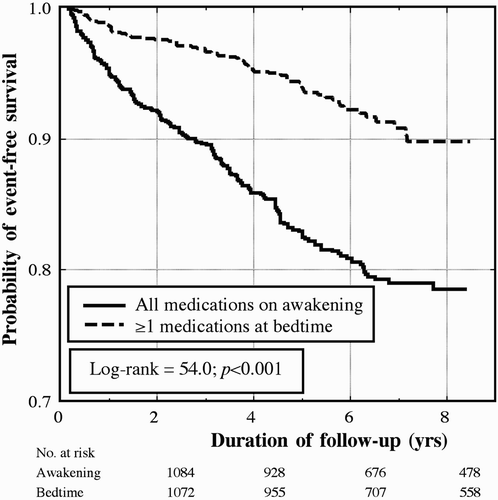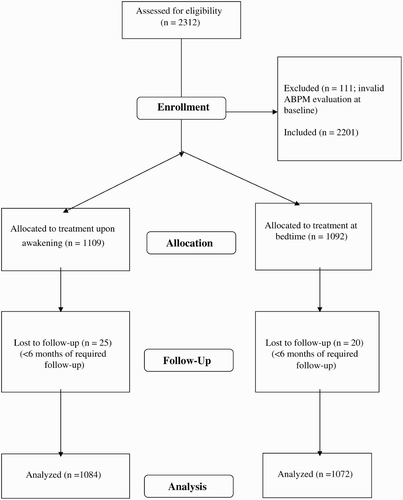Figures & data
TABLE 1 Baseline characteristics of patients investigated according to treatment-time (either all hypertension medications upon awakening or ≥1 medications at bedtime)
TABLE 2 Final characteristics of patients investigated according to treatment-time (either all hypertension medications upon awakening or ≥1 medications at bedtime)
FIGURE 2 Kaplan-Meier survival curves as a function of time-of-day of hypertension treatment, i.e., for subjects ingesting either all their medication upon awakening or ≥1 medications at bedtime.

FIGURE 3 Relative risks (with 95% confidence intervals) of CVD events (adjusted by age, sex, and diabetes) as a function of time-of-day of hypertension treatment, i.e., for subjects ingesting either all their medication upon awakening or ≥1 medications at bedtime. Total events include death (from all causes), CVD events, cerebrovascular events (stroke and transient ischemic attack), heart failure, acute arterial occlusion of the lower extremities, rupture of aortic aneurisms, and thrombotic occlusion of the retinal artery. Major events include CVD deaths, myocardial infarction, ischemic stroke, and hemorrhagic stroke. CVD events include myocardial infarction, angina pectoris, and coronary revascularization.

TABLE 3 Relative risk of total CVD events associated with changes in clinic and ambulatory (ABPM) blood pressure (BP) during follow-up
